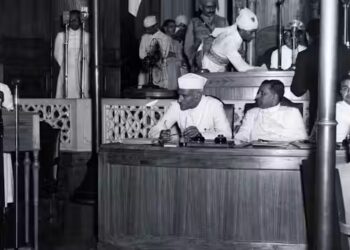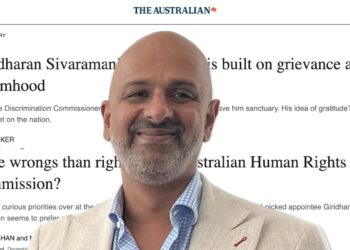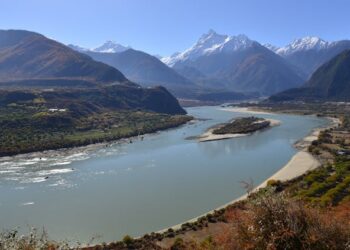By Anubhav Shankar Goswami
Ahead of the 2024-25 Border-Gavaskar Trophy (BGT), Tourism Australia pulled out all the stops, showcasing a variety of Australian experiences to entice Indian tourists, with sandboarding, kayaking, and Michelin-star dining making the cut. They engaged renowned cricketers such as David Warner and Adam Gilchrist to promote iconic Australian locations, capitalising on the cricketers’ fame in India. By 2035, Australia is projected to attract more than 1 million Indian tourists each year, making India its fourth-largest tourism market. By this time, approximately 70 million Indians are expected to travel internationally each year, potentially contributing roughly AUD$9 billion to the Australian economy. It’s no surprise that Tourism Australia is doing all it can to raise Australia’s reputation as a top tourist destination for the booming Indian outbound tourism market.
Tourism Australia, however, is not yet exploiting the pivotal role played by social media influencers in shaping travel preferences among the youth in India. This neglect may cause Tourism Australia to miss out on a large part of the market as most tourists from India are youths. Currently, Tourism Australia’s reliance on cricket celebrities to sway Indian travellers is out of step with Indian youths’ disillusionment with celebrity influence. According to the Omnifluence 2022 Report published by Omnicom Media Group, only 13 percent of Gen Z social media users follow standard celebrity figures, with 86 percent instead preferring the new generation of Instagram influencers. Instagram influencers are followed by 52 percent of millennials; for celebrities, this number comes down to 47 percent. Another survey indicated that 30 percent of market participants in India are more inclined to buy a product advocated by a blogger than a celebrity. In short, the balance has tipped in favour of influencers. The Omnifluence report also revealed that 70 percent of respondents have chosen a travel destination based on a suggestion from a social media influencer, and 40 percent of this group have actually travelled to a location promoted by an influencer. This exemplifies the considerable impact that influencers have on the decisions that young people in India make about their travel plans. Another study in 2024 provided “empirical validation of influencers as impactful digital opinion leaders that shape tourist attitudes and behaviours,” confirming influencers’ capacities to nudge social media users to travel destinations.
There are several reasons for the popularity of influencers in driving such choices. The two most important are the perceived authenticity of influencers and their perceived credibility in owning a brand message. People perceive influencers like Dhruv Rathee, Gaurav Taneja, Shenaz Treasurywala, and Tanya Khanijow, for instance, as authentic people. Celebrities, meanwhile, are frequently perceived as distant figures. This relatability and trust renders influencers highly effective in shaping consumer behaviour. According to another survey, “73% of adolescents and young adults report feeling a genuine connection with a YouTuber (only 45% said the same about a TV or movie star).” Moreover, the credibility of an influencer typically surpasses that of a celebrity who only conveys an advertising pitch, as the celebrity endorsement is unilateral, without opportunities for engagement or dialogue. According to Jasravee Kaur Chandra, a renowned brand management leader, “a social media influencer spends a lot of time and effort in growing and building his/her community of followers. She accumulates followers one by one and truly understands their hot buttons.” The interactions of a “social media influencer with her followers are personal. She understands the follower’s pain points. She often engages them by answering questions and sharing her views about topics of interest. This creates compelling loyalty.”
With the right kind of influencer selection, identifying top influencers with a substantial following in the travel, lifestyle, and adventure sectors, Tourism Australia can successfully engage a significant Indian audience, particularly among younger demographics, generating awareness and enthusiasm for visiting Australia. In particular, Tourism Australia ought to work with influencers who are aware of the subtle cultural differences of the Indian audience so that they may customise messaging to fit their tastes. Influencers could promote sales, holidays, or other occasions that may draw tourists from India. Lastly, influencers should be encouraged to create content showcasing Australia’s welcoming attitude and respect for Indian culture and customs.
In a digital age where online recommendations increasingly affect travel decisions, social media influencers have proven to be useful partners in promoting tourism. Young people are the most active social media users, their high levels of involvement and responsiveness to material on social media being characteristic of their youth. The advice and experiences of the influencers they follow have a growing impact on their travel decisions. Tourism Australia should engage with Indian influencers to promote Australian tourism and encourage millions of young Indians to travel to, and spend money in, Australia.
Anubhav Shankar Goswami is a Doctoral Student of Politics and International Relations at the School of Humanities, Arts and Social Science, Murdoch University, Perth. His doctoral research is based in the field of nuclear strategy with a particular focus on nuclear brinkmanship. Anubhav tweets at Anubhav Shankar (@Shankar5Anubhav).
This article is published under a Creative Commons License from the Australian Institute of International Affairs.











